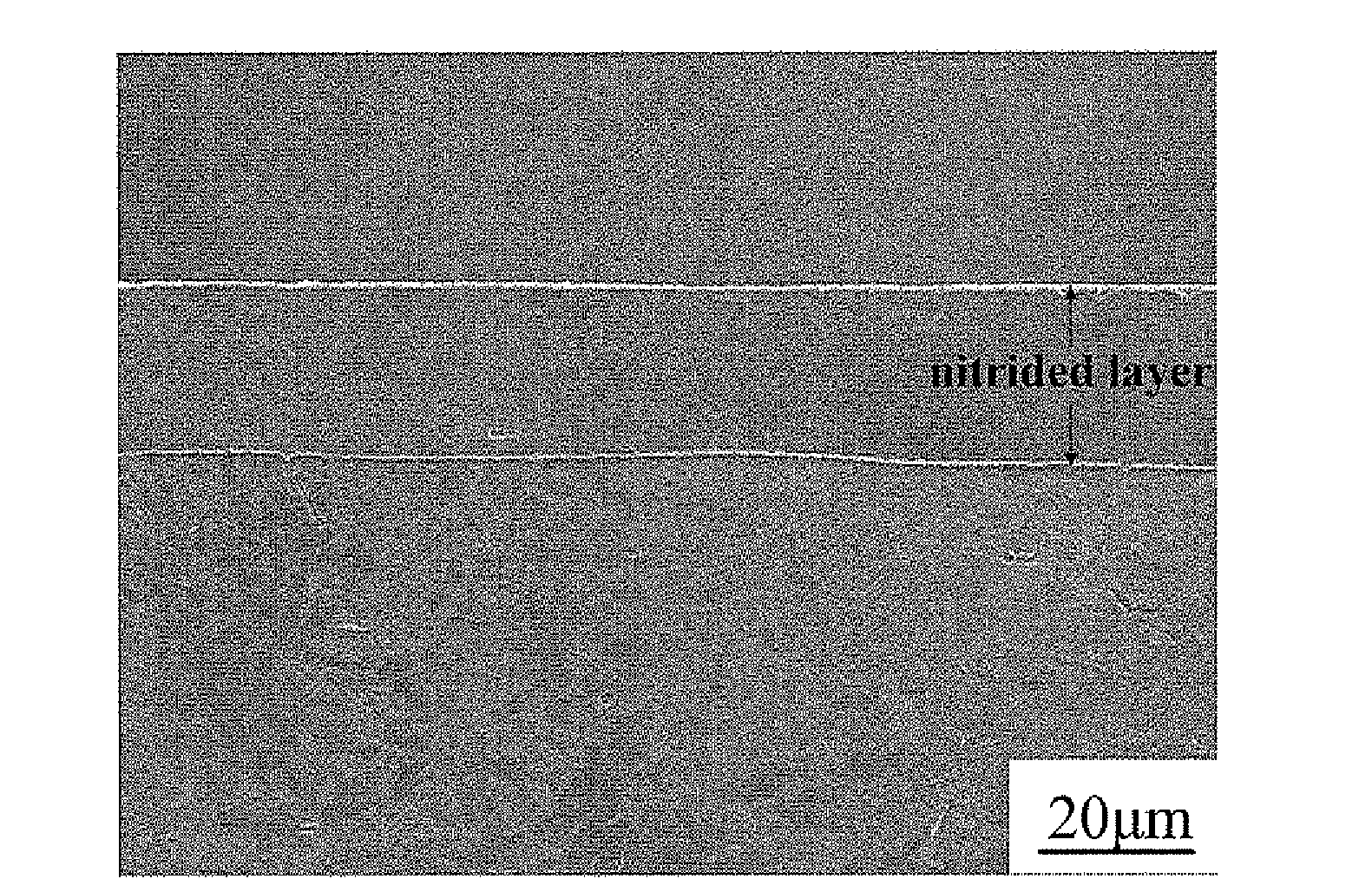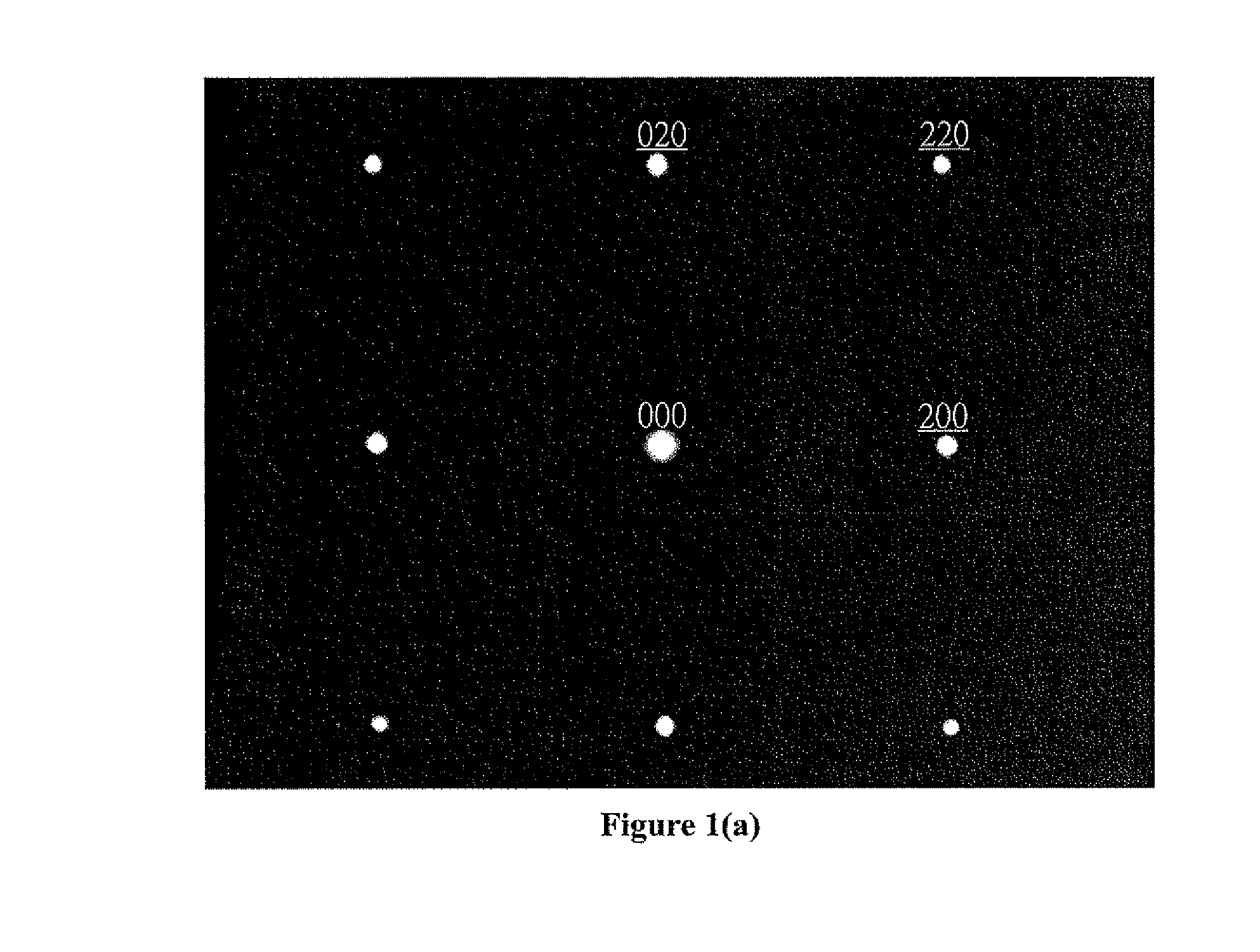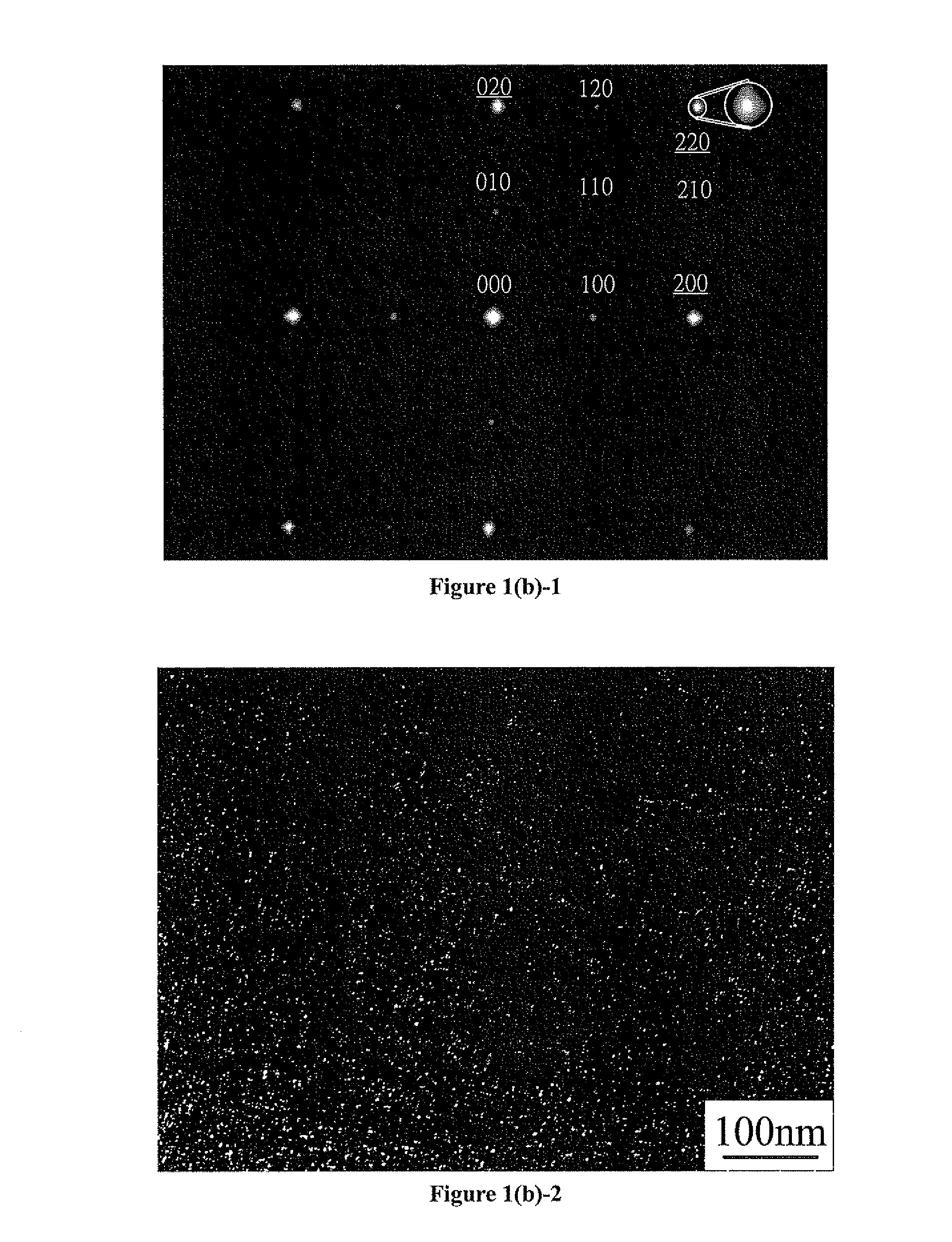Composition design and processing methods of high strength, high ductility, and high corrosion resistance FeMnAlC alloys
a technology of femnalc alloys and composition design, which is applied in the direction of solid-state diffusion coating, heat treatment equipment, manufacturing tools, etc., can solve the problems of inability to achieve the goal of obtaining alloys, and take more than 500 hours to reach the same mechanical strength, etc., to achieve the effect of superior ductility and higher mechanical strength
- Summary
- Abstract
- Description
- Claims
- Application Information
AI Technical Summary
Benefits of technology
Problems solved by technology
Method used
Image
Examples
example 1
[0076]FIG. 10(a) shows the TEM (100)κ′ dark-field image of an Fe-27.6 wt. % Mn-9.06 wt. % Al-1.96 wt. % C alloy disclosed in the present invention after being solution heat-treated at 1200° C. for 2 hours and then quenched into room temperature water. It is obvious that a high density of extremely fine κ′-carbides was formed within the austenite matrix. The result of tensile test revealed that the UTS, YS, and El of the present alloy are 1120 MPa, 892 MPa, and 53.5%, respectively. FIG. 10(b) is a SEM image taken from the fracture surface of the as-quenched alloy after tensile test, revealing the presence of ductile fracture with fine and deep dimples. FIG. 10(c) is a SEM micrograph taken from the free surface in the vicinity of the fracture surface, showing that the austenite grains were drastically elongated along the direction of the applied stress. Moreover, slip bands were generated over the specimen and some isolated microvoids (as indicated by arrows) were formed randomly with...
example 2
[0078]This example is aimed to demonstrate the effects of aging time on microstructural evolution and associated mechanical properties of an Fe-28.6 wt. % Mn-9.84 wt. % Al-2.05 wt. % C alloy disclosed in the present invention, which was solution heat-treated, quenched and then aged at 450° C. for various times. This example will further illustrate the significant benefits resulted from one of the prominent novel features disclosed in the present invention, namely: “A high density of extremely fine κ′-carbides can be formed within the austenite matrix through the spinodal decomposition mechanism during quenching”. With this prominent feature, the alloys disclosed in the present invention can accomplish remarkable enhancements in mechanical strength while maintaining the excellent ductility by aging at much lower temperatures with significantly shortened aging time. The TEM (100)κ′ dark-field image of the present alloy in the as-quenched condition has been shown in FIG. 1(g)-2. Analys...
example 3
[0081]This example investigates the effects of aging time on microstructural evolution and associated mechanical properties of the same alloy shown in FIG. 1(e)-2, which was solution heat-treated, quenched and then aged at 500° C. and 550° C. for various times. Experiments confirmed that when the as-quenched Fe-29.0 wt. % Mn-9.76 wt. % Al-1.82 wt. % C alloy was aged at 500° C. for less than 8 hours, both the average particle size and volume fraction of the spinodal decomposition-induced κ′-carbides formed within the austenite matrix increased with increasing aging time. Moreover, within this aging time, no grain boundary precipitates could be observed and the mechanical strength of the alloy was increased with increasing aging time while keeping alloy reasonably ductile. However, as the aging time was increased to over 10 hours, the large κ-carbides started to precipitate on the austenite grain boundaries, resulting in significant reduction in ductility. These experimental results a...
PUM
| Property | Measurement | Unit |
|---|---|---|
| Temperature | aaaaa | aaaaa |
| Temperature | aaaaa | aaaaa |
| Temperature | aaaaa | aaaaa |
Abstract
Description
Claims
Application Information
 Login to View More
Login to View More - R&D
- Intellectual Property
- Life Sciences
- Materials
- Tech Scout
- Unparalleled Data Quality
- Higher Quality Content
- 60% Fewer Hallucinations
Browse by: Latest US Patents, China's latest patents, Technical Efficacy Thesaurus, Application Domain, Technology Topic, Popular Technical Reports.
© 2025 PatSnap. All rights reserved.Legal|Privacy policy|Modern Slavery Act Transparency Statement|Sitemap|About US| Contact US: help@patsnap.com



